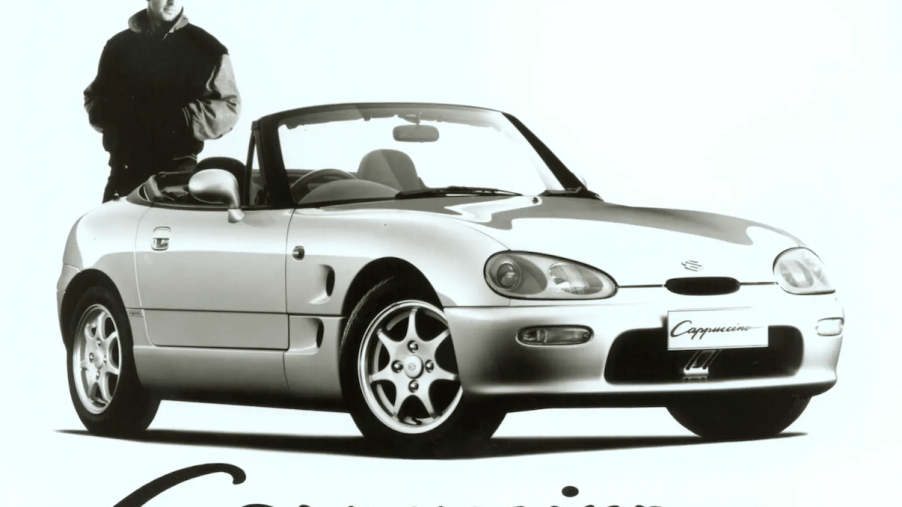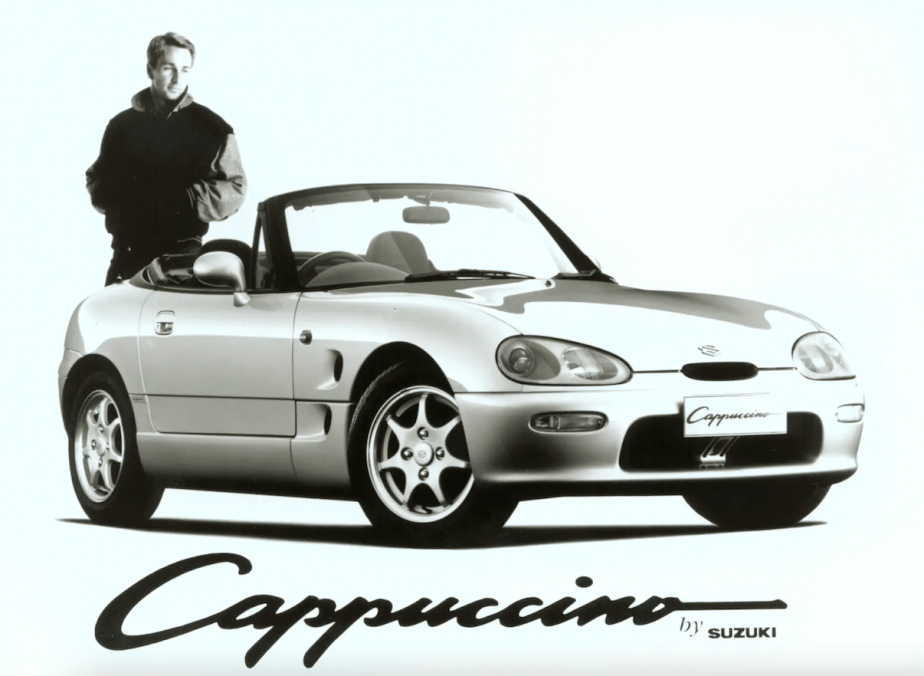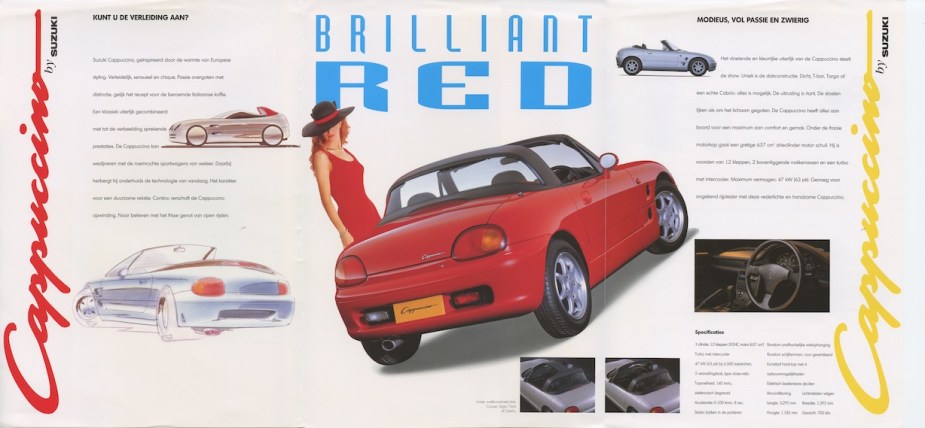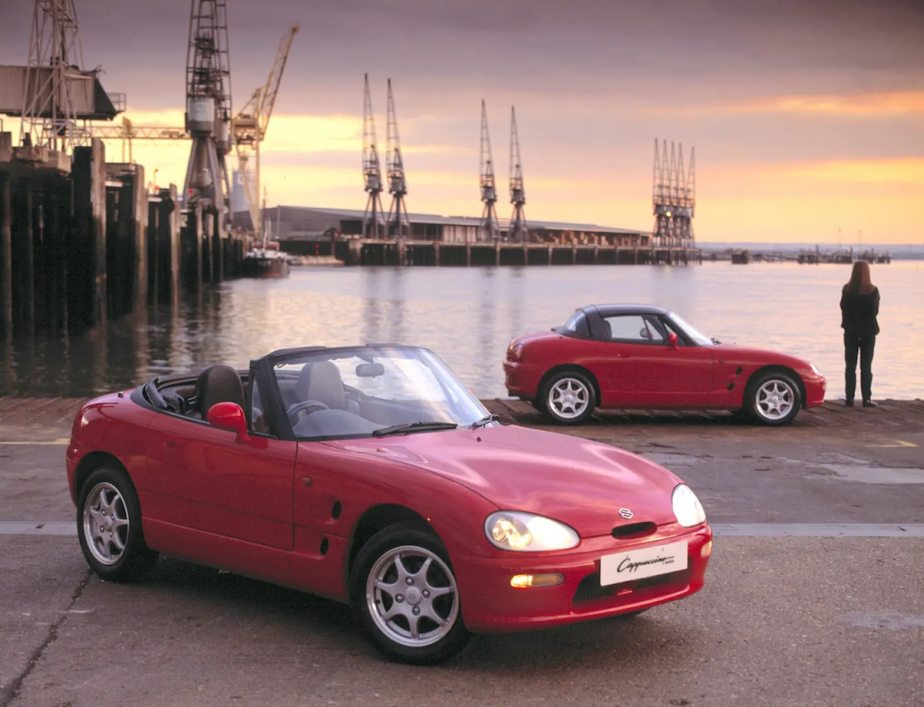
Suzuki Cappuccino: Cheap Fun Kick in the Pants JDM
Get some guts and get yourself one of the smallest forbidden treasures on four wheels, the Suzuki Cappuccino. They’re really small, rarely seen in the U.S., with simple and lightweight qualities that you can dual as a daily driver and track car. Did we say they’re small?
How small is the Suzuki Cappuccino?

Don’t let that stop you from exploring Suzuki’s ultimate JDM sports car. Coming in at two feet shy of an early Mazda Miata in length, it makes up for its diminutive size in fun. If you’ve ever eyed owning a Miata, 1980s Honda CRX, or Toyota MR2, then you probably have at least heard of the Cappuccino.
Part of the slew of Japanese Kei cars was not available anywhere but there, they were for years illegal in the U.S. But under our 25-year rule for imports, we occasionally see a few that made the journey here. Under Kei car regulations, they tend to be small, narrow, and powered by under 665cc engines.
Mostly seen at amateur race gatherings, the compact sports car could be the perfect track car. Because of their Kei car status, power comes from a simple, small, turbocharged 657cc 12-valve engine pumping out 63 hp. While seeming more like a stomach pump, when combined with its 1,600 lb weight and five-speed manual transmission, out of the box it hit 60 mph in a tad over seven seconds.
Can a Cappuccino beat a Mazda Miata?

Yes, a Miata can hit that number in the high fives stock, but you can’t fling it around like the Suzuki. With a 50/50 weight bias and plenty of torque for quick blasts between turns, solid engineering allows it to conquer corners with ease. Don’t forget, the Cappuccino isn’t about straight-line acceleration.
Since first appearing in 1991, the Cappuccino has proven not only fun but durable throughout the years. They’re almost bulletproof in stock form. And they even tout 40 mpg economy, attesting to their functioning as daily drivers.
Production lasted from 1991 to 1998. Though its original intent was for the Japanese market only, UK distributors convinced Suzuki to tweak the Cappuccino for domestic sale. In 1993, the first of these UK-specific sports cars to much fanfare. But the textbook for Kei cars dictates limited production.
How many Cappuccinos were made?

Combined with Japan’s thumb on UK exports, only 1,182 were produced. For comparison, Suzuki sold a total of 28,000 Cappuccinos in its eight years of production. Suzuki also made special UK-only “high specification” Cappuccinos. Special “BA” versions got four-wheel ABS, a limited-slip differential, and a driver’s airbag. While not a rich source of available cars, UK versions might be worth investigating.
If there is a sweet spot for model years, it would be the 1995-and-later versions. They saw upgrades including overall weight reduction, chain-drive camshafts, and a bit more torque. Also offered was an automatic transmission and electric power steering, which both you might want to avoid.
The best part of all might be the price. There are several sources for Kei cars already imported into the U.S. for $10,000, though most generally run between that and $20,000. Still, that’s way south of Miata prices used, unless you’re looking at marginal examples. With their Japanese quality, even higher-mileage Cappuccinos seem to hold up well.



